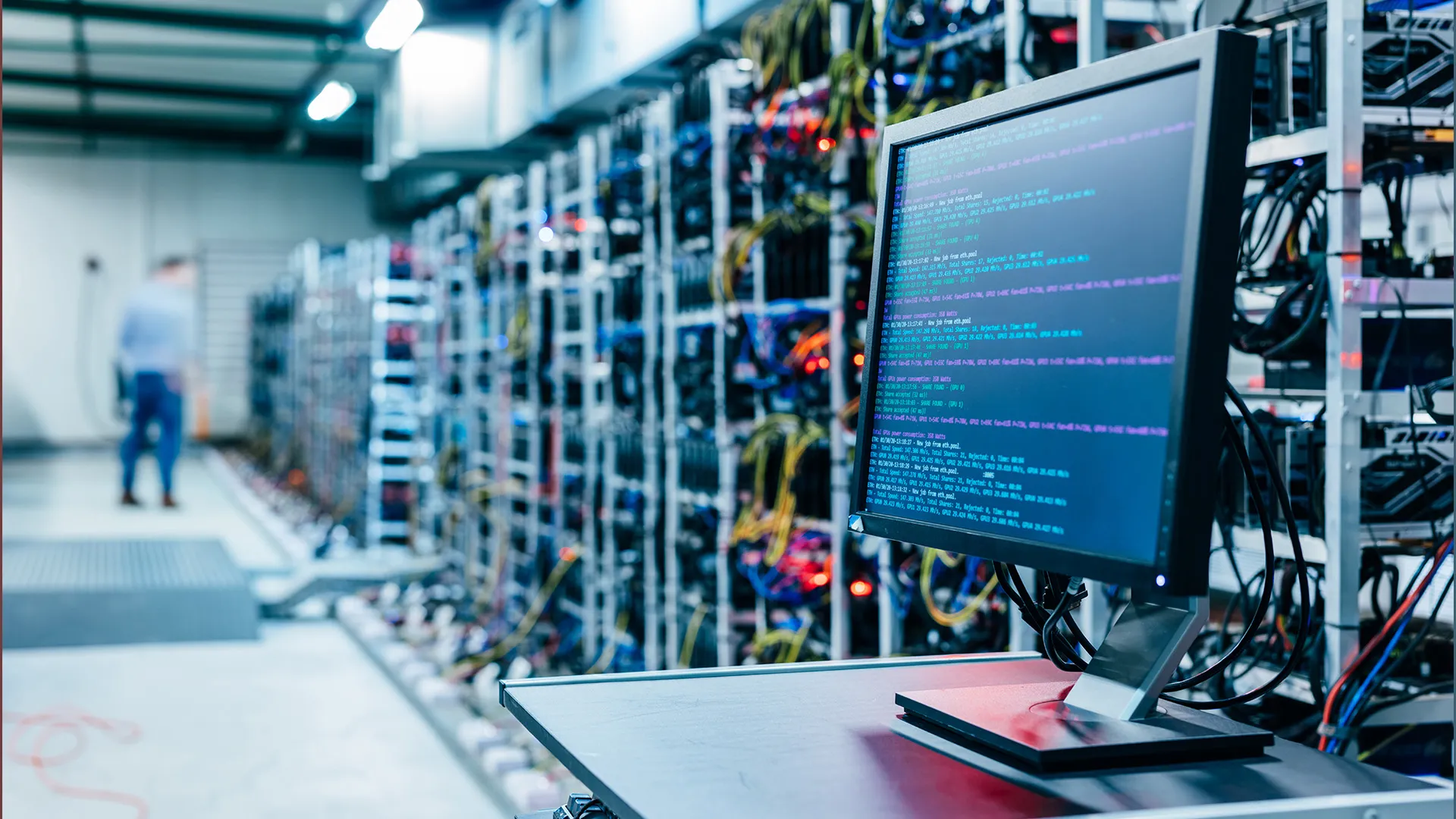
How Do Crypto Mining Machines Work?
Crypto mining machines work by running algorithms that validate transactions and generate new coins. Here’s a basic rundown of the process:
- Transaction Verification: Miners verify the legitimacy of transactions by solving complex cryptographic problems.
- Adding Transactions to the Blockchain: Verified transactions are added to a “block” and linked to previous blocks, forming a secure chain.
- Mining Rewards: The first machine (or group of machines in a mining pool) to solve the problem receives a cryptocurrency reward. In networks like Bitcoin, the reward halves approximately every four years to control the supply.
This process, known as Proof-of-Work (PoW), is highly competitive. The miner with the fastest machine and most efficient setup has the highest chances of earning rewards.
Types of Crypto Mining Machines
Mining machines can be categorized based on their hardware type and efficiency. Let’s go through the main types:
- CPU Mining:
- Description: CPU mining uses the computer’s central processing unit to mine cryptocurrencies.
- Pros: Affordable and accessible; can use standard home computers.
- Cons: Slow and inefficient; high energy consumption for minimal reward.
- Best for: Low-power cryptocurrencies, hobbyists, and entry-level miners.
- GPU Mining:
- Description: GPU mining utilizes graphics processing units (GPUs) to solve equations faster than CPUs.
- Pros: Highly efficient for certain coins (like Ethereum); suitable for large-scale mining.
- Cons: Expensive initial setup and high electricity usage.
- Best for: Altcoins like Ethereum Classic and Ravencoin.
- ASIC Mining (Application-Specific Integrated Circuit):
- Description: ASIC miners are purpose-built machines designed specifically for mining. They offer the highest performance for certain cryptocurrencies.
- Pros: Unmatched efficiency and speed; ideal for large-scale mining.
- Cons: Expensive, limited to mining specific cryptocurrencies; high electricity usage.
- Best for: Bitcoin and other major Proof-of-Work cryptocurrencies.
- FPGA Mining (Field-Programmable Gate Array):
- Description: FPGA mining machines are customizable and can be programmed to mine different cryptocurrencies.
- Pros: Lower power consumption; offers some flexibility compared to ASICs.
- Cons: Complex to set up, and still less efficient than ASICs for large-scale operations.
- Best for: Intermediate miners looking for a customizable solution.
Key Factors to Consider in a Crypto Mining Machine
When selecting a mining machine, several factors can impact your mining profitability and efficiency:
- Hash Rate: This refers to the processing power of the mining machine, measured in hashes per second (H/s). A higher hash rate generally leads to higher chances of successfully mining a block.
- Power Consumption: Power usage is a significant cost factor in mining. Efficient machines use less electricity for a given hash rate, maximizing profitability.
- Price and ROI: The initial cost of the machine and expected return on investment (ROI) should be balanced. Some machines pay off faster than others depending on the cryptocurrency mined and the market conditions.
- Mining Pools and Network Difficulty: Being part of a mining pool can enhance the likelihood of consistent returns, especially for smaller machines. The network difficulty, which adjusts regularly, impacts the mining rewards.
Top Mining Machines for 2024
- Bitmain Antminer S19 Pro
- Type: ASIC
- Hash Rate: 110 TH/s
- Power Consumption: 3250W
- Best for: Bitcoin mining
- Pros: High efficiency and well-regarded reputation.
- Cons: High power consumption and initial cost.
- NVIDIA GeForce RTX 3090
- Type: GPU
- Hash Rate: Varies depending on cryptocurrency
- Power Consumption: 350W
- Best for: Ethereum Classic, Ravencoin
- Pros: Flexible; can be used for different cryptos.
- Cons: Expensive; may become less efficient as Ethereum transitions to Proof-of-Stake.
- Whatsminer M30S++
- Type: ASIC
- Hash Rate: 112 TH/s
- Power Consumption: 3472W
- Best for: Bitcoin mining
- Pros: High performance, one of the most powerful Bitcoin miners available.
- Cons: High energy demand; requires specialized setup.
- AMD Radeon RX 6800 XT
- Type: GPU
- Hash Rate: Good for Ethereum Classic and similar coins.
- Power Consumption: 300W
- Best for: Intermediate miners
- Pros: High-performance GPU mining card with great resale value.
- Cons: High initial cost.
- AlphMiner AX10 (FPGA)
- Type: FPGA
- Hash Rate: Varies
- Power Consumption: Moderate
- Best for: Adaptable mining for altcoins
- Pros: Customizable, flexible across different cryptocurrencies.
- Cons: Complex setup; requires technical knowledge.
Getting Started with Crypto Mining
If you’re interested in crypto mining, start by understanding which cryptocurrency you want to mine, assessing the power costs in your area, and setting a realistic budget. Be mindful of network changes, such as Ethereum’s shift to Proof-of-Stake, which could impact the value and profitability of your hardware.
Conclusion
Crypto mining machines range from basic CPUs to highly specialized ASIC miners, each with unique strengths. While CPU and GPU mining are accessible options, serious miners typically invest in ASICs or FPGAs for higher efficiency. Selecting the right machine depends on your goals, budget, and the specific cryptocurrencies you aim to mine. The rapid evolution of mining hardware and cryptocurrency markets means it’s crucial to stay informed and adapt your strategy to maximize returns.


